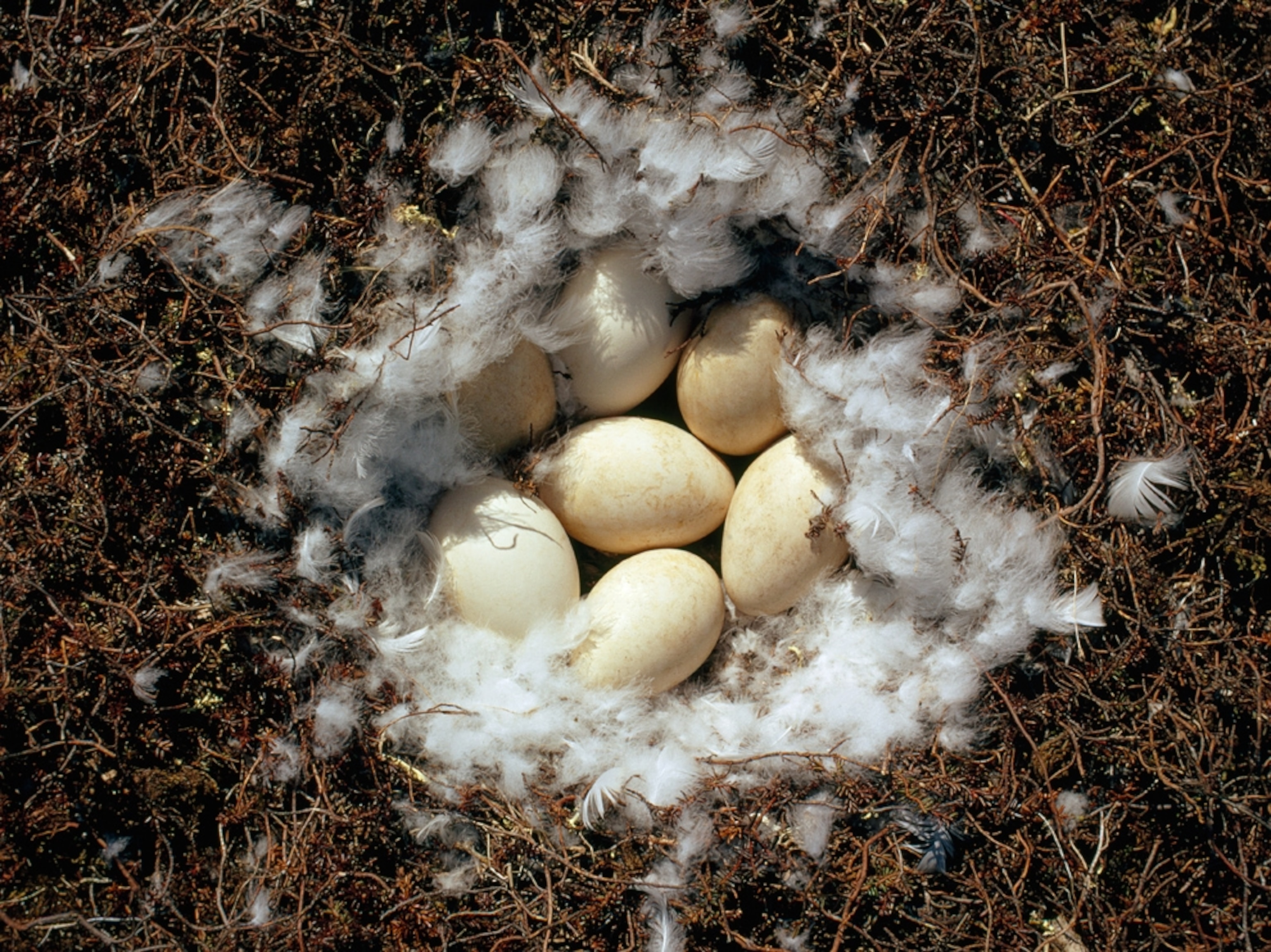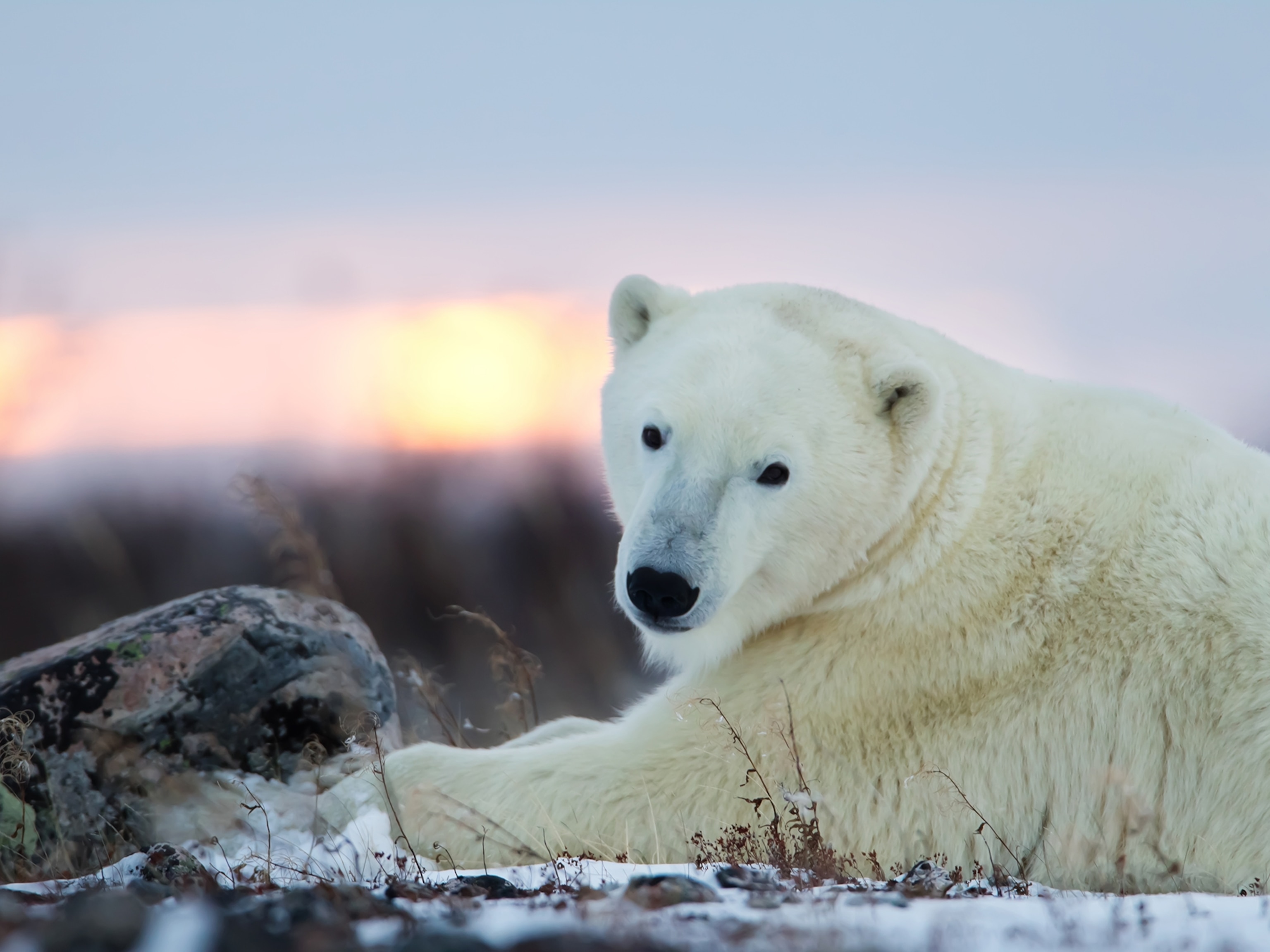
Polar Bears Turning to Goose Eggs to Survive Warming?
Eating a snow goose egg is "like eating a stick of butter," expert says.
Polar bears may be turning to snow goose eggs to help them survive as Arctic sea ice melts due to global warming, scientists say.
Polar bears typically hunt seals out at sea, returning to land when springtime temperatures melt the ice floes the bears use as rest stops. But climate change has been causing sea ice to melt earlier each year (pictures), forcing polar bears to come ashore sooner.
In a previous study, biologist Robert Rockwell and his colleague Linda Gormezano documented polar bears in Canada's Hudson Bay area (map) returning to land about two weeks earlier than they'd done in the past, near the end of June instead of the middle of July.
This early arrival brings the bears back to shore around the same time that nesting snow geese are incubating their eggs in Hudson Bay.
Snow goose eggs are more often food for skuas and Arctic foxes. But polar bears are famous for their voracious appetites: One polar bear reportedly went on a "goose egg-fest," Rockwell said, devouring more than 800 eggs in four days.
Accounts like this have caused some scientists to worry that hungry polar bears might severely reduce or wipe out nesting snow goose populations.
(Related: "Grizzly Bears Moving Into Canada's Polar Bear Capital.")
But in new research, recently published online in the journal Oikos, Rockwell and his team show that the currently plentiful snow goose population is in no danger from the bears. In fact, the eggs might provide a valuable backup food source as polar bears are forced to end their seal hunts early.
For one thing, a snow goose egg is about twice the size of a chicken egg, but it is much more nutritious, said Rockwell, a research associate at the American Museum of Natural History and a professor at the City University of New York.
Downing a goose egg is like "eating a stick of butter," he said. Rockwell estimates that if a polar bear eats about 88 snow goose eggs, the bear will be consuming the caloric equivalent of a seal.
Bears and Geese Will Occasionally "Mismatch"
Snow geese are migratory birds that spend their winters in warmer parts of North America. The birds typically arrive in the Arctic to breed around the end of May and remain through August. (Find out about "Great Migrations" on the National Geographic Channel.)
Millions of snow geese arrive in Canada each year to breed, and each nesting female lays four eggs, on average.
Snow geese are currently considered a species of least concern according to the International Union for Conservation of Nature, because they have a wide range and a large global population that seems to be increasing.
Rockwell's initial research suggested polar bears are developing an alarming taste for their new food source. The biologist had even heard reports of some bears coming ashore before the sea ice melts to gorge on goose eggs.
(Also see "Arctic Foxes Put Eggs in 'Cold Storage' for Lean Times.")
The new study, however, indicates that the birds are safe.
Using historical records, Rockwell and his colleagues simulated the timing of four events that occur during the Arctic spring: the break-up of sea ice, the polar bears' migration to shore, the northward migration of snow geese, and the laying of eggs.
The results showed that, even though the two species' time on land will increasingly overlap as global warming continues, there will always be "mismatches"—years when the bears just miss the nesting geese.
"It's just natural [climate] variation," Rockwell said. "It only takes the occasional year of mismatch to allow the goose population to reset itself."
Polar bears are expected to come ashore even earlier in the coming years, so goose eggs could become an increasingly vital food source for them. (See "Polar Bears Listed as Threatened Species in U.S.")
"Bears are bears," Rockwell said. "Once they find a food source, they're going to capitalize on it."





